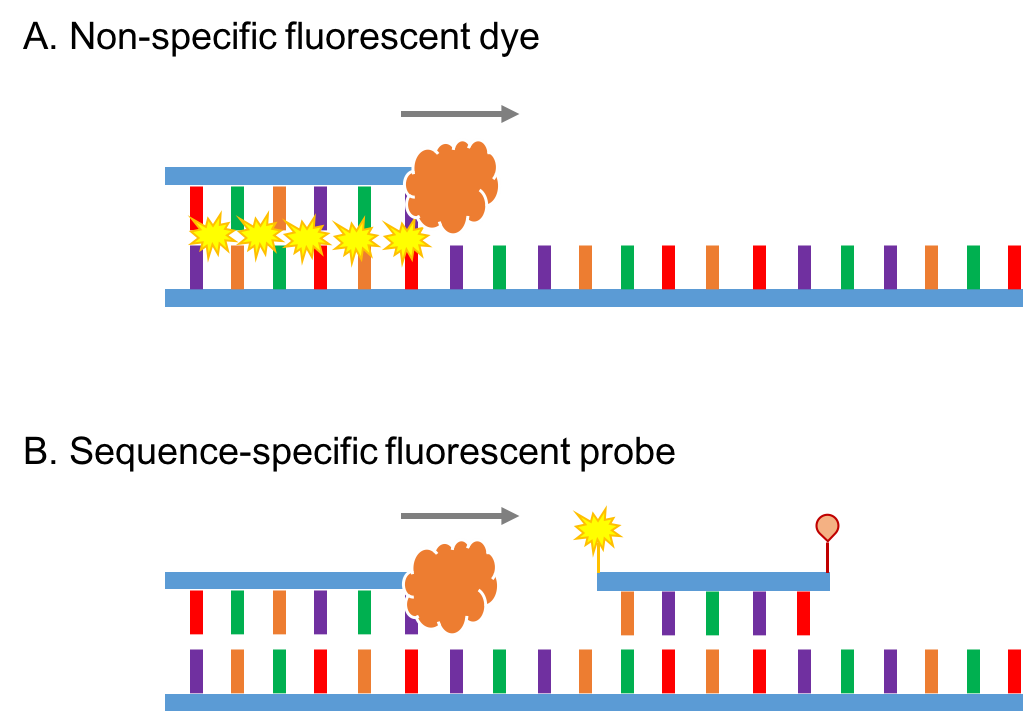Real-time polymerase chain reaction (Real-Time PCR), also known as quantitative PCR (qPCR), is a powerful tool for the detection and profiling of gene expression levels. Unlike conventional PCR, the starting materials for Real-Time PCR/qPCR are RNAs, which have to be transformed into DNAs via reverse transcription process.
Compared to conventional PCR, the biggest advantage of Real-Time PCR/qPCR is that it allows real-time monitoring of PCR products at the end of each amplification cycle. Specifically, products of Real-Time PCR/qPCR are labeled with fluorescent dyes (non-specific fluorescent dyes) that can be incorporated into double stranded DNA, or fluorescence-tagged DNA fragments (sequence-specific fluorescent probe) that are complimentary to specific sequences (Figure 1). Therefore, as the amplification process goes on, the accumulation of PCR products can be reflected by the increase of fluorescence intensities. Eventually, the real-time fluorescent signals collected by the qPCR instruments will be available as quantitative data sets.
 Figure 1. Comparison of two commonly used fluorescent reporters for Real-Time PCR/qPCR.
Figure 1. Comparison of two commonly used fluorescent reporters for Real-Time PCR/qPCR.
As a fast, sensitive method with high specificity and flexibility, the Real-Time PCR/qPCR technique has gained great popularity in the plant biology field. Aside from basic studies toward plant gene functions, Real-Time PCR/qPCR has also been employed in multiple industrial purposes, such as detection of genetically modified organisms (GMOs) and testing for phytopathogens. Lifeasible, an industry-leading plant biotechnology company, provides reliable and high quality services for Real-Time PCR/qPCR experiments within the plant system.
With years of experience in plant molecular study, we proudly offer one-stop service for plant gene expression profiling with Real-Time PCR/qPCR (Figure 2). Besides, our plant biology scientists will provide you with strategic and technical support through each step of the assay, including:
 Figure 2. The workflow of our one-step service.
Figure 2. The workflow of our one-step service.
We welcome you to contact us for our product and service catalogs, experimental consultation and collaborations. Our customer-centered services guarantee that each project is given the attention it needs, and ensure the maximal output with reduced cost.
Lifeasible has established a one-stop service platform for plants. In addition to obtaining customized solutions for plant genetic engineering, customers can also conduct follow-up analysis and research on plants through our analysis platform. The analytical services we provide include but are not limited to the following:
STU-CRISPR System Improves Plant Genome Editing Efficiency
April 19, 2024
Application of Exosomes in Facial Beauty
April 12, 2024